


While Square Enix was content with only showing off Play Arts figures on the show floor at New York Comic Con this year, they had a bunch of upcoming games to demo for the press this weekend. One of those titles was Crystal Dynamics’ upcoming Lara Croft and the Temple of Osiris.
Due out Dec. 9 this year on PC, PlayStation 4 and Xbox One, the Egyptian-themed adventure serves as a sequel to 2010’s Guardian of Light and stars Lara Croft in a top-down isometric action adventure that adds four-player co-op to the mix.
After some hands-on time with a preview build of the PC version, I came away impressed by the title, even if some of it felt familiar to Guardian of Light. Read on to find out seven things I learned after playing through it.

The game doubles the amount of players from its predecessor, allowing up to four players in online and local co-op. Players can drop in and out at any point, and interestingly enough, the game’s puzzles will change to accommodate the amount of players.
I noticed that the game doesn’t allow you to swap characters at any moment, so you pretty much have to drop out and drop back in just to select a new character.

Lara Croft is joined by rival treasure hunter Carter Bell and two “imprisoned” gods: Horus and Isis. All four can set down remote bombs that can be detonated at any time, which is helpful for blasting obstructions and enemies alike. Lara and Carter share similar moves, including a grappling hook and a torch.
The gods Horus and Isis wield staves that shoot out a ray of light, and can also surround themselves with a spherical shield that deflects projectiles. They can also utilize their magic to raise and lower the temple’s platforms and pillars. This creates an interesting dynamic in which players will need to rely on their platform-raising abilities to progress.
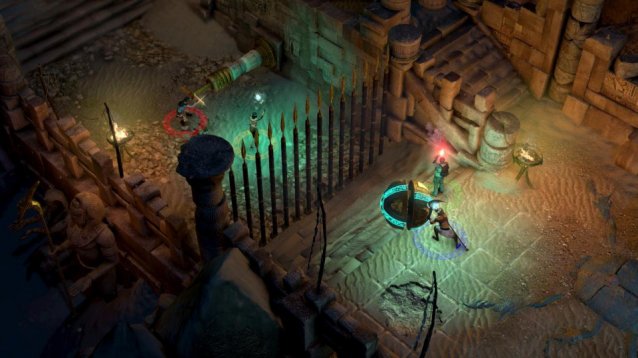
I never got very far in Guardian of Light, but a lot of the puzzles and tricks from that game have made their way to Temple of Osiris. These include torch-lighting puzzles and using the grappling hook as a rope bridge for your partners in order to cross chasms and spike pits. In turn, Lara can hook onto another player and use their grip to swing over the pit or rappel up a wall.
Another far more unique puzzle had each player step on a respective tile that activated an eyeball statue in the center. The eyeball would shield itself from all but one player, who had to attack it before it fired its laser.

Towards the end of my playthrough, my group encountered a giant alligator/dragon hybrid, which chased after us, destroying everything in its wake. This chase sequence had us running for our lives while also rolling under and jumping over rolling spike traps.
It was an absolute thrill to go through, with many close moments where a player would jump off a crumbling platform just in the nick of time to get away from the demon.
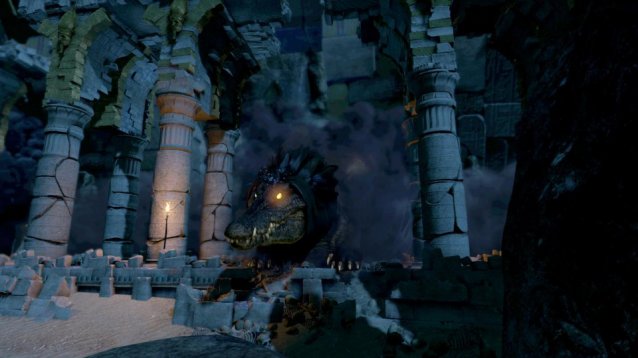
During the chaotic chase with Mr. Alligator Dragon (Alligon?), there were a ton of collectibles we missed out on simply because we were too focused on running for our lives. These collectibles would have required one of the gods to stop and activate platforms for others to reach them.
Suffice to say, it might seem difficult to coordinate something like that in the midst of a chaotic chase sequence, so those of you looking to 100% this game may want to do these sort of segments alone, or band together with like-minded achievement hunters who know what they’re doing.

I definitely felt like my time with Temple of Osiris was enhanced by the four-player “couch” co-op. I loved experimenting with the characters’ different techniques to solve puzzles, and the game’s level design really encouraged everyone to point out secrets they’ve discovered or to let each other know what they’re about to do.
We also shared a laugh or two at an accidental spike death and the fact that the gods could optionally wield submachine guns.
Nevertheless, if you want to go it alone, single player allows Lara to also wield Horus’ Staff of Osiris, so she’ll have access to every character’s abilities.
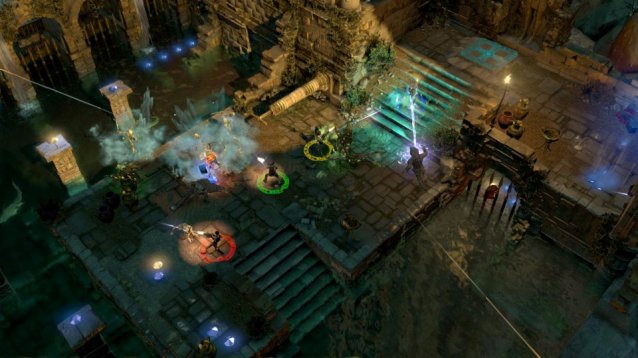
Crystal Dynamics is touting the “competitive co-op” aspect of the game. This means that players are encouraged to not only cooperate, but to also one-up other players in their loot-gathering, much like the recent Gauntlet remake and Nintendo’s The Legend of Zelda: Four Swords Adventures.
So yes, that means friendly fire is enabled, and you may have to deal with that one jerk who decided it’d be hilarious to retract their grappling hook and let you meet a grisly, pointy death.
To make the act of griefing a little less frustrating, however, the only caveat to dying in the game is losing a bit of your loot. Respawn times are super short, meaning you’ll be back in the action soon enough to get back at that mean-spirited “partner.”



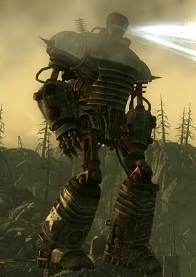
 Fallout 4 Complete Companion Location Guide
Fallout 4 Complete Companion Location Guide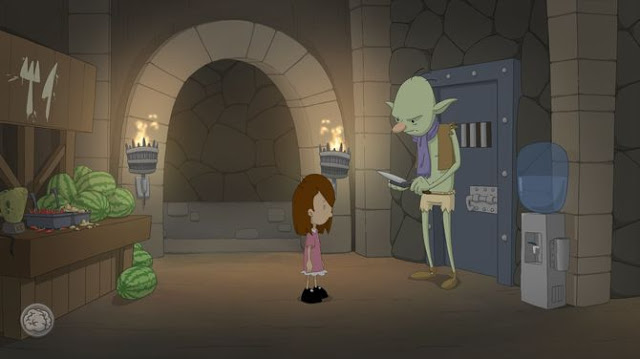 Annas Quest (PC) Complete Solution
Annas Quest (PC) Complete Solution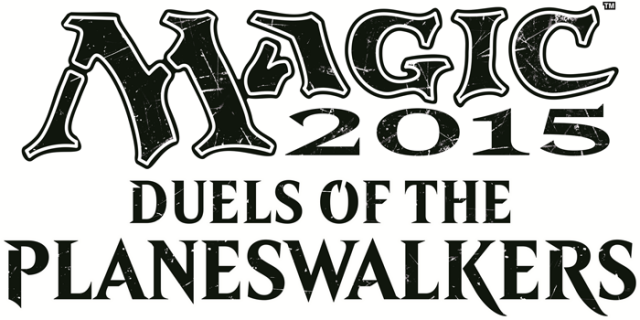 Magic 2015: Complete Walkthrough and Minumum System requirements
Magic 2015: Complete Walkthrough and Minumum System requirements Dark Souls 2 Weapons and Shields Guide Greatshields
Dark Souls 2 Weapons and Shields Guide Greatshields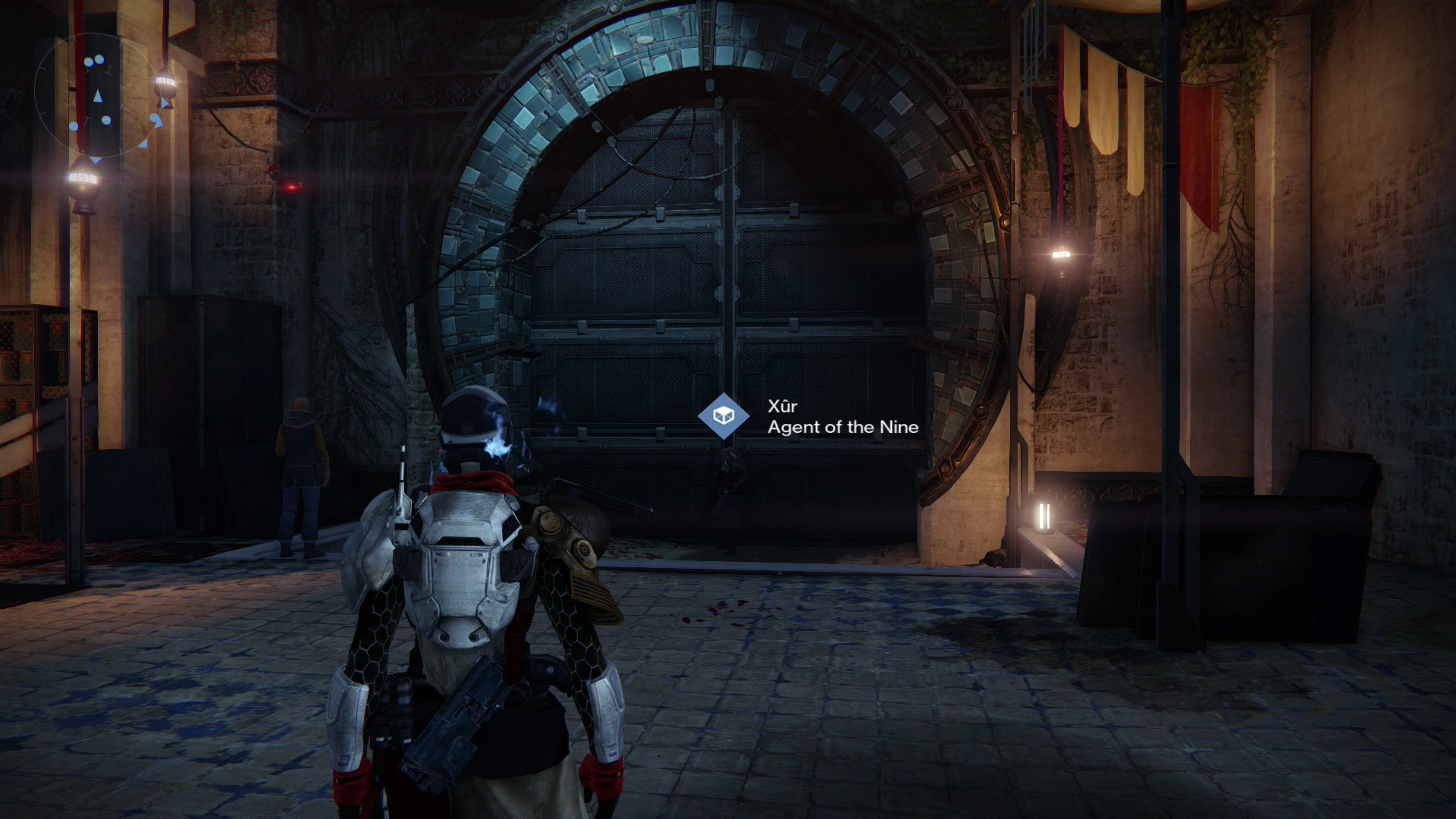 Destiny: What is Xur Selling - July 24 - 26
Destiny: What is Xur Selling - July 24 - 26